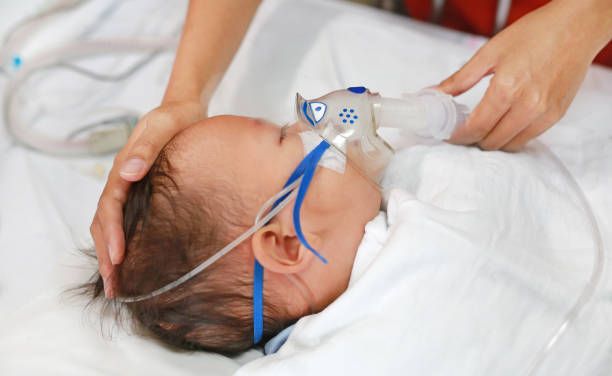The Centers for Disease Control and Prevention (CDC) Advisory Committee on Immunization Practices endorsed using nirsevimab, a long-acting monoclonal antibody, for infants under 8 months old to guard against RSV-associated lower respiratory tract infection during their initial RSV season. It recommended nirsevimab for children 8-19 months who are at risk of severe RSV disease. The findings aim to protect infants against RSV, through maternal vaccination or the direct administration of nirsevimab to the infants.
Out of the 699 hospitalized infants with acute respiratory illness, 59 (8%) had been administered nirsevimab more than 7 days before symptom onset. The effectiveness of nirsevimab in preventing RSV-associated hospitalization was determined to be 90% (95% CI = 75%–96%). The median time from receiving nirsevimab to onset symptoms was 45 days, with an interquartile range (IQR) of 19-76 days.
“The strengths of this first estimate of US post-introduction nirsevimab effectiveness include enrollment of infants using a standardized ARI definition, systematic RSV testing, and receipt of nirsevimab verification with state immunization information systems or medical records for all infants,” according to the CDC. “However, it is important to note that nirsevimab effectiveness during a full RSV season is expected to be lower than the estimate reported here because antibody levels from passive immunization wane over time.”
3 Key Takeaways
- The CDC's Advisory Committee on Immunization Practices has endorsed using nirsevimab, a long-acting monoclonal antibody, for infants under 8 months old to protect against RSV-associated lower respiratory tract infection during their initial RSV season.
- Nirsevimab has shown 90% effectiveness in preventing RSV-associated hospitalization among infants who received the treatment more than 7 days before symptom onset.
- Despite the promising effectiveness of nirsevimab, the report highlights considerations including its late-season availability, supply issues, and the inability to evaluate effectiveness by dosage or its impact on reducing outpatient and emergency visits.
This study spanned from October 1, 2023, to February 29, 2024. This involved monitoring 699 infants hospitalized due to acute respiratory illness to determine the effectiveness of nirsevimab, focusing on those who had received the monoclonal antibody at least 7 days before the onset of symptoms.
“The median interval from receipt of nirsevimab was 45 days, whereas the median duration of the US RSV season before the COVID-19 pandemic was 189 days.,” according to the CDC. “In clinical trials, nirsevimab remained highly efficacious against RSV-associated lower respiratory tract infection in infants through 150 days after receipt of nirsevimab, consistent with an extended half-life of 63–73 days.”
This report highlights limitations including its late season availability and supply issues limited its use, affecting the generalizability of results. The low number of treated infants impeded detailed effectiveness analysis, and the timing of nirsevimab's introduction may have allowed for prior RSV infections in some cases. Additionally, effectiveness was not evaluated by dosage or its impact on reducing outpatient and emergency visits, indicating areas for future research.
Overall, RSV is identified as a high cause of hospital admissions among infants in the US. Despite the limited uptake of nirsevimab and constraints related to the interval from its administration, the early estimates from this analysis reinforce the CDC’s recommendation of nirsevimab for preventing severe RSV disease in infants. This conclusion is drawn from the high effectiveness rate of nirsevimab in preventing RSV-associated hospitalization among infants who received it.
Reference
1. CDC. Early Estimate of Nirsevimab Effectiveness for Prevention of Respiratory Syncytial Virus–Associated Hospitalization Among Infants Entering Their First Respiratory Syncytial Virus Season — New Vaccine Surveillance Network, October 2023–February 2024. Published March 7, 2024. Accessed March 11, 2024. https://www.cdc.gov/mmwr/volumes/73/wr/mm7309a4.htm?s_cid=mm7309a4_w

